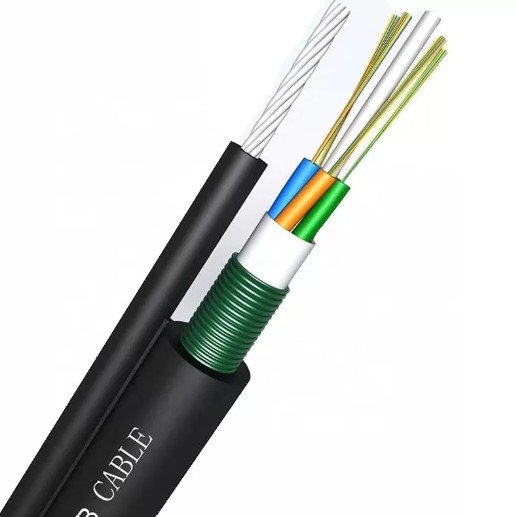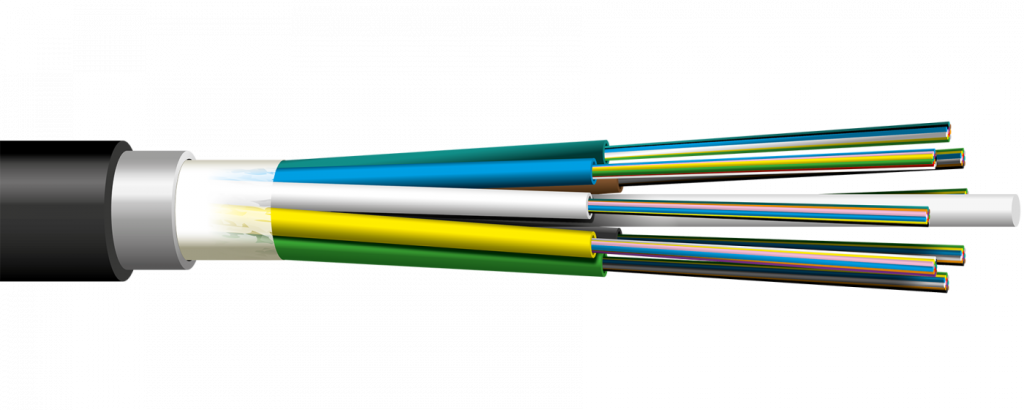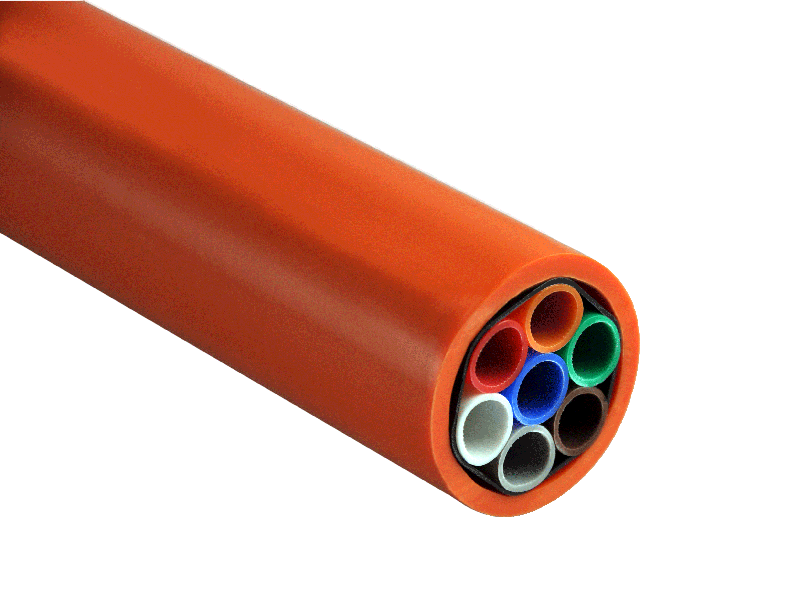Outdoor Fiber Optic Cable
Figure 8 Cable
Figure-8 cables are primarily used for aerial installations where the cable needs to be self-supporting. They have a distinctive figure-8 shape, with the fibers and strength members arranged in a configuration that allows the cable to be easily installed and attached to support structures.


ADSS Cable
ADSS cable stands for All-Dielectric Self-Supporting cable. It is a type of fiber optic cable designed for aerial installations, commonly used in telecommunications and power utility applications. ADSS cables are constructed with a non-metallic, all-dielectric (non-conductive) design, which allows them to be installed on existing overhead power lines without interfering with the electrical conductivity. These cables are self-supporting, meaning they have sufficient strength and rigidity to be suspended between support structures (such as utility poles) without the need for additional messenger wires. ADSS cables are used to transmit data and telecommunications signals over long distances, providing reliable and high-speed communication capabilities.
Armored Cable
Armored cables are designed for added protection in outdoor environments. They have an additional layer of metal or polymer armor surrounding the fiber core, providing enhanced resistance to crushing, impact, rodents, and other external factors.


All-Dielectric Cable
All-dielectric cables are specifically designed for outdoor installations where electrical grounding is not possible or where the avoidance of electrical interference is required. They use non-metallic strength members and armor for high insulation and resistance to electromagnetic interference (EMI).
Direct Burial Cable
Direct burial cables are designed for installation directly into the ground without the need for conduit. They have a robust outer jacket and added layers of protection to withstand the harsh conditions underground, including moisture, soil pressure, and potential rodent damage.


Submarine Cable
Submarine cables are used for long-distance communication across underwater environments, such as across oceans or lakes. They have specialized designs that provide protection against water pressure, corrosion, and mechanical stresses associated with submarine installations.
Duct Cable
Duct cables are designed for installation within conduits or ducts, providing a protected pathway for the fiber optic cables. They are typically designed with a relatively smaller diameter to fit inside ducts and are suitable for both outdoor and indoor installations.


Ribbon Cable
Microduct Cable


Optical Fibre Composite Overhead Ground Wire (OPGW)
Stranded Loose-Tube Cable

Airblown Micro Fiber Optic Cable
Drop Cable

